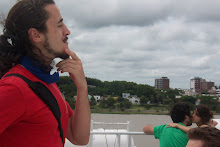For my personal Individualized Education Plan I learned how to use a type of web-based software that is designed to help students clarify their personal goals. I decided on this project for myself because I felt that the students in my Transitions class would really benefit by doing a project that encouraged them to reflect on how they want to live their lives. The Transitions class is designed to help the Alaska Native / American Indian students that are currently going through a "transition" in their lives, whether it be a transition from a village to Anchorage, from school to school, or from one living situation to another. From discussions we were having in class, I got the impression that many of these students felt uprooted; they had been living one way of life, and then suddenly they find themselves playing a new game, with new rules. I hoped that by helping them to clarify their goals, it would help to think about the life *they* personally wanted to live, and to start working towards that ideal.
The web-based software can be found at www.telavision.tv Basically, using this website students can create short media presentations that can include text, music/audio, video, and special effects. The idea is that students will use these media tools to create a vision of their future, writing down their goals as if they have already happened. This could also be done using a program such as Windows Media Maker or iMovie, but the benefit of the Tel-A-Vision software is that it the basics can be learned relatively quickly, there are excellent built-in tutorials on its use, and it has a large number of stock photos, music, and most importantly, video effects. This allows students to focus more on the "meat" of the project- their vision for their future - rather than spending the majority of the time learning to use the software. Even in the relatively short time that we worked on this unit, thanks to the built-in video effects, several students were able to create presentations that were very visually appealing. In fact, the projects turned out so well that we took the class to the Alaska Native Charter School across the bridge from Bartlett and had them present to the elementary students there.
Unfortunately, due to time constraints during the school year, I was unable to fully explore all of the available features of this web-based software until after we had already finished the unit. My time spent exploring the options and creating my own Tel-A-Vision project has helped me refine the lesson plans I created for this project a bit more and has also shown me that the grading rubric needed to be altered in several ways. I also now have a video to model for the students, which will definitely make the unit better; what I did this year was to simply give the students time to look at other people's projects. I am glad that I spent the time to play with the software and look at the available options, as I think that it will help me make this unit even better for next year's Transitions class.
Sunday, June 21, 2009
Subscribe to:
Post Comments (Atom)

1 comment:
MR. MADDEN,
I love your TEL.A.VISION video and the lesson plan you developed for your students. I have a strong desire to see this being used by Native Americans and other At Risk populations. May I use your lesson plan and blog post to show other teachers?
Blessings,
george
Post a Comment